Thank you for visiting our site! You landed on this page because you entered a search term similar to this: adding subtracting dividing multiplying integers games.We have an extensive database of resources on adding subtracting dividing multiplying integers games. Below is one of them. If you need further help, please take a look at our software "Algebrator", a software program that can solve any algebra problem you enter!
| Kindergarten Builds essential math background and develops and extends mathematical thinking through stories, games, and center activities to teach basic math understandings. Extensive work is done with counting, reading, writing, renaming, and relationships. Concrete and pictorial models are used to discover part of a whole/part. To learn about relationships, children answer questions such as "How are these alike/different?" while experimenting with patterns, collecting, sorting, ordering, and comparing. |
Grades 1 through 2 To help students successfully understand and apply basic facts, the program begins with an understanding of number and what a number sentence means. This leads to algebra success.
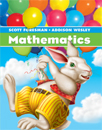 | Grade 1 Emphasizes the concepts of how much, how many, and fewer than. Exploration of these concepts is done through collecting, estimation, organizing and interpreting data, interpreting and extending patterns, and writing addition and subtraction equations. Addition and subtraction facts through 10 are learned. |
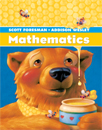 | Grade 2 Uses pictures, words, and numbers to have students solve word problems and record their thinking in writing (journal writing). Estimation and mental-math strategies are emphasized. Focus is on addition and subtraction facts through twenty. The concepts of regrouping and multiplication are introduced. |
Grades 3 through 6 From step-by-step instruction on every student page to daily assessment and customized intervention, the math program enables teachers to differentiate instruction and helps students achieve authentic progress.
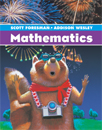 | Grade 3 Stresses mental math, problem-solving strategies, regrouping, and mastering addition and subtraction facts. Whole-number multiplication and division, adding and subtracting money, time, and fraction and decimal concepts are introduced. |
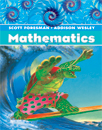 | Grade 4 Emphasizes mental math, the concept of place value, reading numbers to 100,000,000, measurement (i.e., length, weight, and temperature), and adding and subtracting whole numbers. Students learn how to multiply two-digit numbers and divide one-digit divisor into a larger dividend and money. Equivalent fractions, decimal-fractions relationships, and adding and subtracting with like and unlike denominators are introduced. |
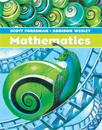 | Grade 5 Values the mastery of addition, subtraction, multiplication, and division of whole numbers. Emphasis is on mental math, adding, subtracting, multiplying, and dividing mixed numbers, fractions, and decimals. Developing linear measurement and probability skills are continued. Students are introduced to the concepts of number theory (i.e., prime and composite numbers, prime factorization, greatest common factor, and least common multiple) integers, decimal operations, ratio, proportion, and percent. |
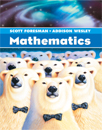 | Grade 6 Reviews all of the basic skills involving addition, subtraction, multiplication, and division of whole and mixed numbers, fractions, decimals, geometry, and mental math strategies. Emphasis is on studying integers, ratio, percent, and probability. Students are introduced to the concepts of statistics, patterns and number theory, and the connections of arithmetic to algebra. |